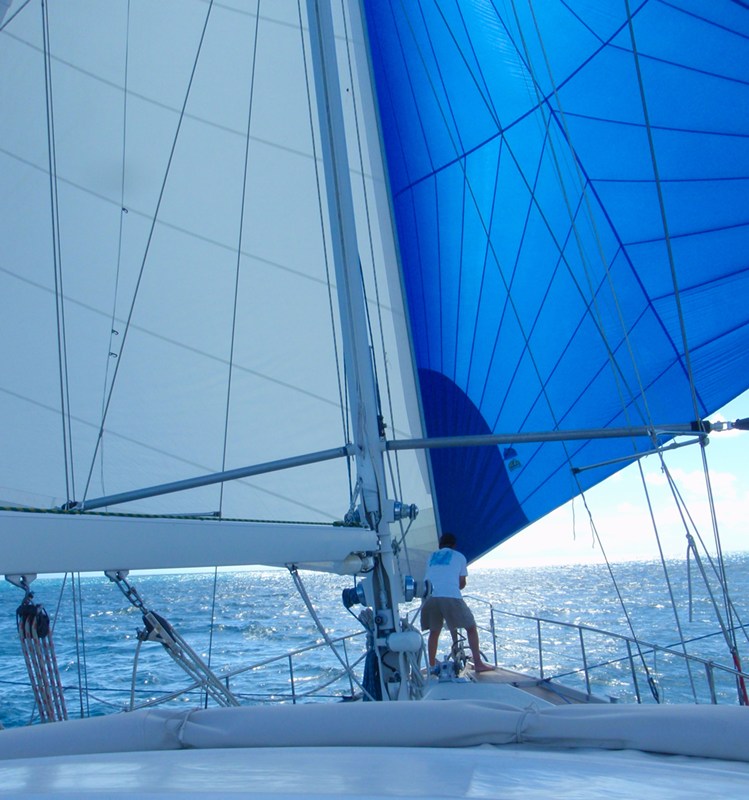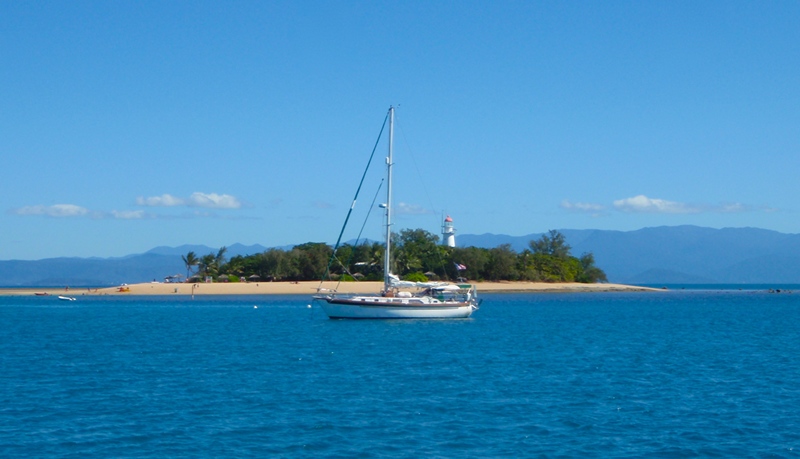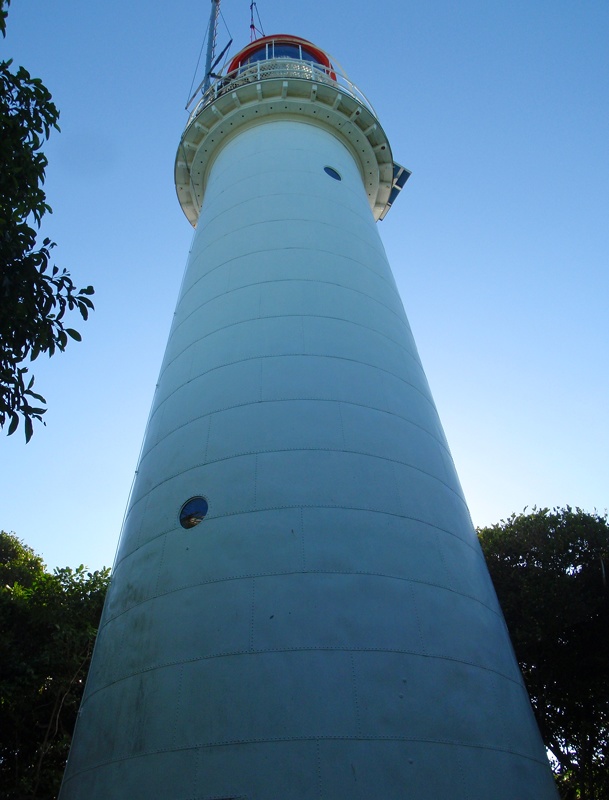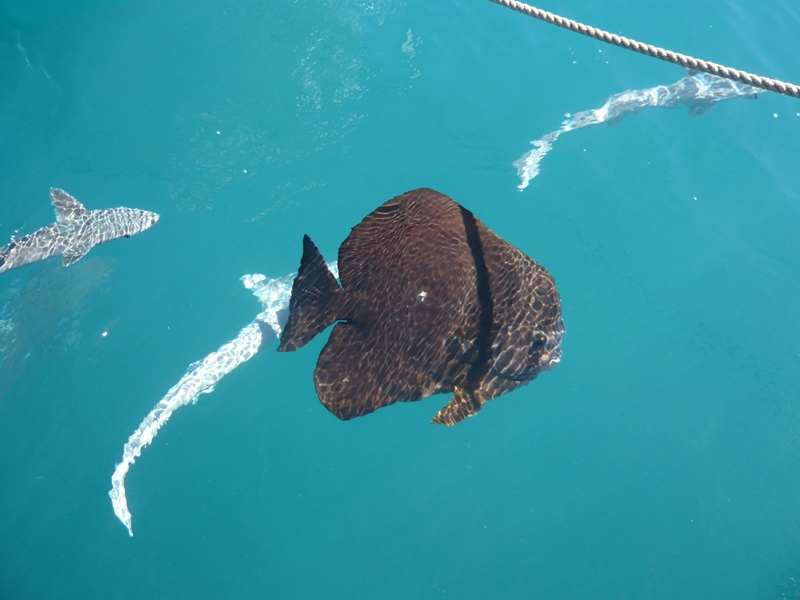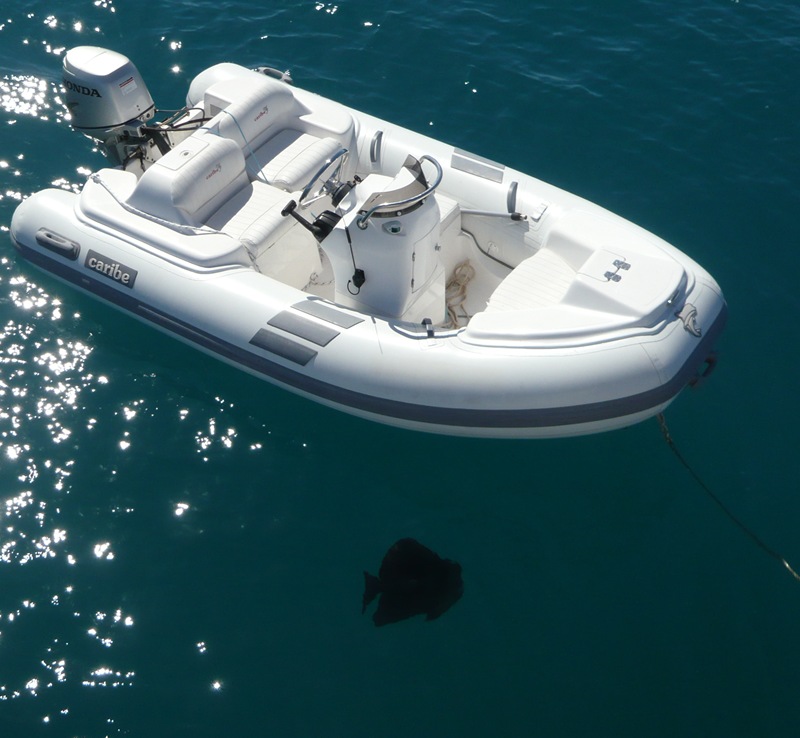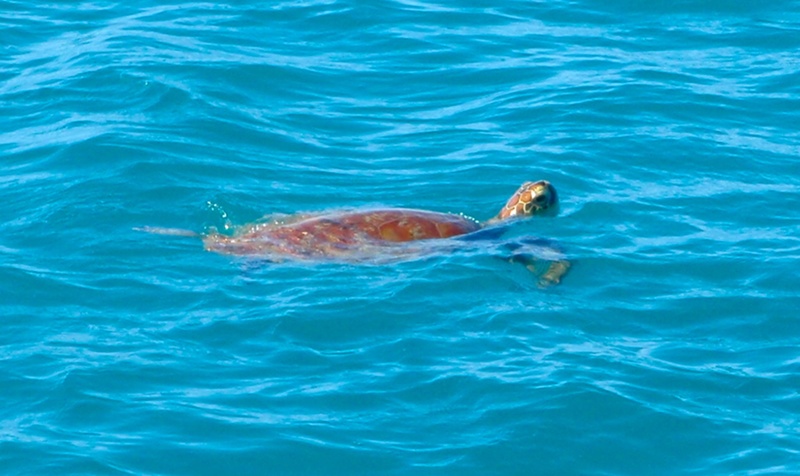Smooth Sailing, Bat Fish and a Killer Stingray - Low Island, Queensland, Australia

Harmonie
Don and Anne Myers
Sun 11 Jul 2010 07:07
|
16:22.895S 145:33.830E
On June 8th, we sailed 45 miles northwest from
Cairns to the Low Isles. On a mission to move at a fast pace given
our late departure from Cairns, we decided it was time for the downwind rig
to make its first appearance of the season. Usually, setting up
the downwind rig for the first time of the season is accompanied
by at least one calamity. For example, there was that time on the first
day of the World ARC Rally after leaving St. Lucia when Don's $500
prescription sunglasses went overboard while we struggled with a
flapping ballooner sail in hefty winds and big seas. Then there was
the first day of the ICA Rally after leaving Opua, New Zealand last year when we
forgot to set up the ballooner halyard properly, and spent several hours hauling
headsails up and down while pointed into brisk winds and seas.
That one wouldn't have been so bad if it wasn't for the fifteen or
so ICA rally boats that passed us by with crews gaping at
our half-hoisted sails fluttering out of control while we motored
in the wrong direction. It figures that this year, the one time we
put up the downwind rig in the beginning of a season without a single
hiccup, there was no one around to witness our triumph. - sigh
- At least we can feel good about
smoothly dismantling the downwind rig within sight of the six or seven boats
anchored and moored in the lee of the Low Isles when we arrived just before
sunset.
For those of you that care about such sailing-type
things, the reason why deploying the downwind rig can so
easily lead to disaster is because it's a fairly complicated rig
and when we haven't used it for a while, we tend to forget the proper
sequence of events and/or the proper equipment setup. The downwind
rig involves two short poles that attach to either side of our
main mast. Two long poles cantilever off the short poles, extending
well out from each side of the boat, each held in place by four lines
- a topping lift to hold the poles up vertically, and forward, mid and aft guys
to hold the poles in place horizontally. All the guy lines are different
lengths and color coded, so we have to remember which goes where
and how tight to tie them when the pole is swung into place. Once the
poles are in place, the mainsail and mizzen must be furled and the genoa
headsail partially furled in order to feed its sheet into the end of the
port-side pole (oops, this step should really take place before the pole
is deployed - see? just writing about this is
confusing). Once the genoa is happily poled out to port, we remove
the starboard-side genoa sheet and replace it with the ballooner sheet
(again, this must be done before the starboard pole is deployed since the
sheet must run through the end of the pole in order for the system to
work). Then the pretty blue ballooner is hoisted, running its front edge
up the second foil on the headsail furler. Then the
topper...through the use of a nifty plastic catch, the top of the ballooner
is transferred to the furler head swivel and removed
from its halyard. This way, if the wind suddenly gusts up, we
can furl both headsails together to reduce sail. An excellent system when
all goes well. And extremely wind efficient - with as little as
6 knots of apparent wind directly behind us, the downwind rig with its two
giant headsails pushes us along at 6 knots.
Fabulous.
The Low Isles, so named by Captain Cook (who
else?), are famous for several reasons. First, they were the base for the
first comprehensive reef ecology study in 1928. Second, Steve
Irwin, the crocodile guy, was killed near here when the barb of a very
large (2.5m wingspan) stingray penetrated his heart. One of only three
fatalities caused by stingrays in Australian waters, it definitely was not
Steve's lucky day. Lucky for us, we didn't see any giant stingrays while
snorkeling.
Picture 1 - Don putting the final touches on the downwind rig after our flawless
deployment.
Picture 2 - Low Island with its picturesque
lighthouse, mainland mountain background and American boat Baraka adding to its
ambiance.
Picture 3 - The Low Island lighthouse.
Originally built in 1878, it still functions as an important marine navigation
marker.
Picture 4 - The friendly bat fish and its
remora friends. The bat fish is the big, flat brown fish and the
black stripe you see is really just a shadow from the line securing the dinghy
to the back of Storyteller. This bat fish took a liking to Storyteller's
dinghy and in dog-like fashion traveled under and beside it everywhere the
dinghy went. Its remora friends are often found in anchorages.
They look like mini-sharks and love to gobble up any food scraps thrown
overboard. In this anchorage they seemed to particularly enjoy our
cantaloupe scraps, although they probably would have been happier
with something more grisly like lamb chop bones. The remoras have
suckers on the top of their heads which they use to attach themselves to larger
marine animals in order to hitch a ride. They will sometimes attach
themselves to the underside of a boat, and it's possible they would attempt to
do the same to a swimming human. Don has had to shoo many a remora away
when scrubbing the underside of our boat using his scuba gear. When this
happens, it's not clear whether the remoras are just being territorial regarding
the underside of our boat or whether they'd like to get to know Don better in
his attractive shiny black suit surrounded by swirling bubbles.
Picture 5 - This looks fake, but it's real -
our favorite bat fish hanging out under Storyteller's dinghy. Helen took
this picture as well as the one above. Marvelous.
Picture 6 - Our first non-camera shy
turtle. Isn't he cute? The waters around Low Island were teeming
with turtles and we swam with a few when Don took his first swim of the
season.
Anne
|
